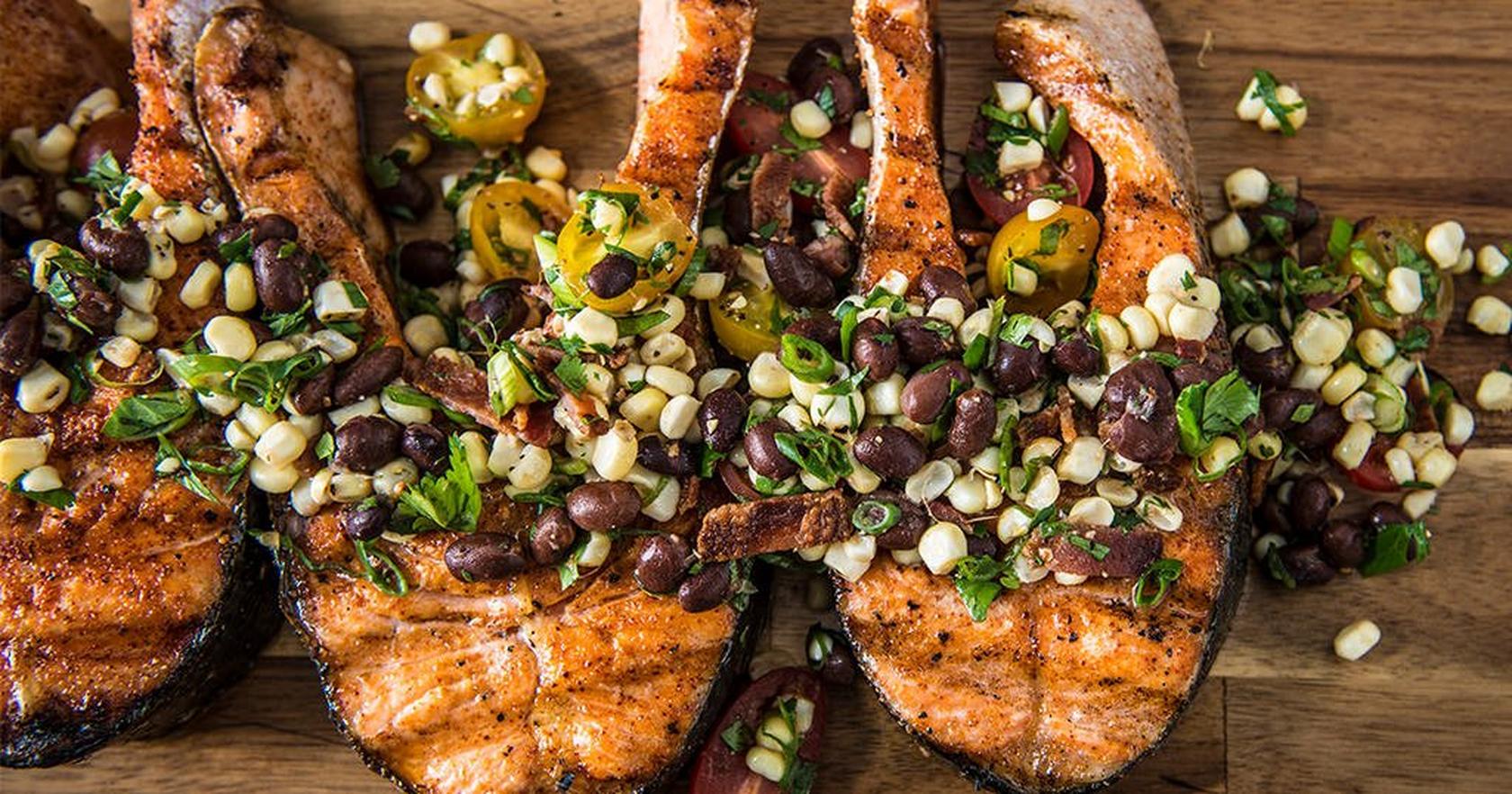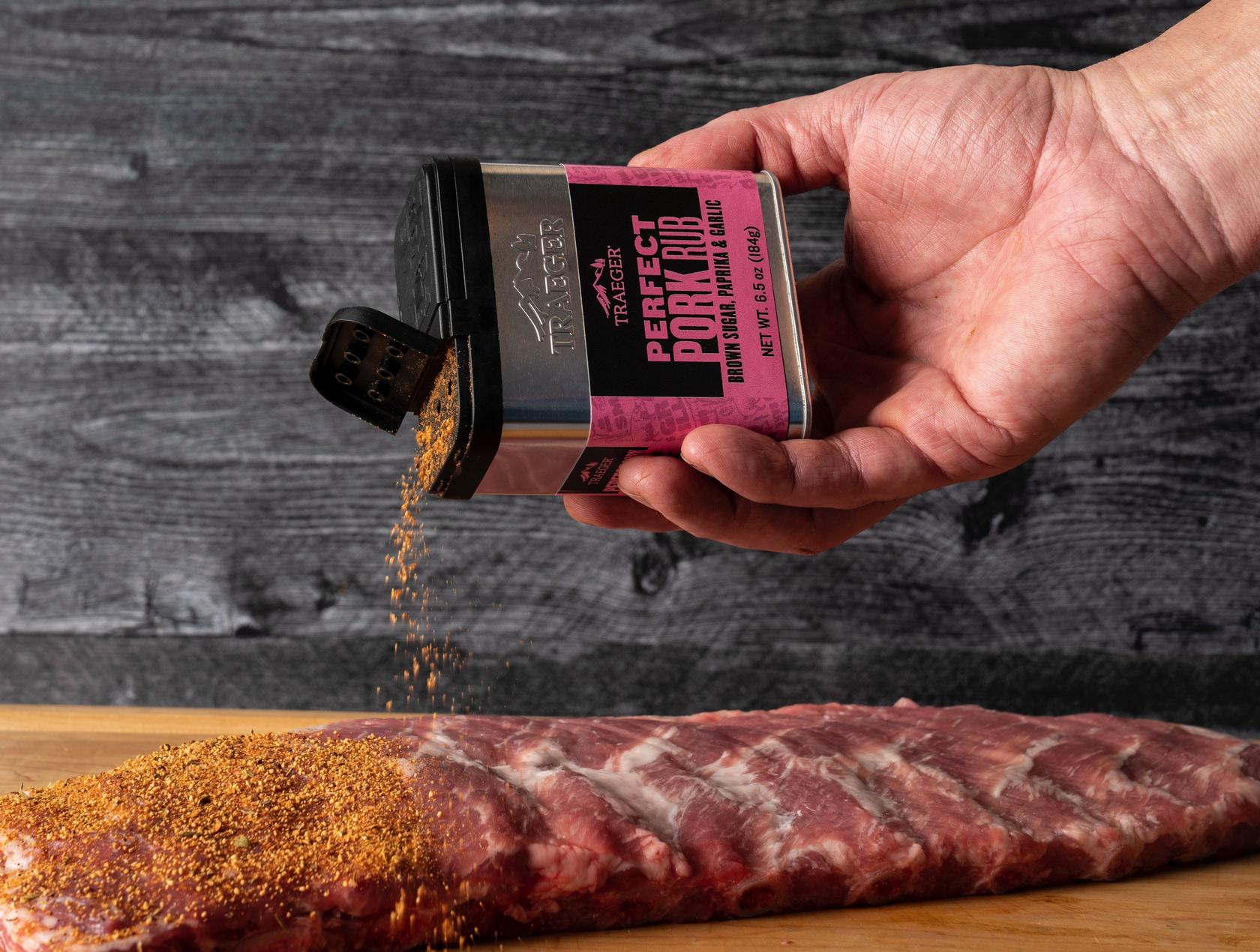
We know you turn to your Traeger pellet grill when it comes to smoking the most delicious brisket, pulled pork, and ribs. But your Traeger should also be your go-to when it comes to grilling foods, too. From grilled steak to grilled corn, burgers and hot dogs, the Traeger can grill foods like a gas grill but with a hint of irresistible wood-fired flavor. Indeed, if you own a Traeger, there’s no need to own a gas or charcoal grill as well, especially if you follow the tips for successful Traeger grilling that follow.
What Does Traeger Grilling Mean?
Grilling can have slightly different meanings depending on who you talk to and even where you are in the world. For our purposes, we will define grilling as cooking foods directly on a grate over high-temperature dry heat. The direct contact with the hot grill grates heats the food through conduction, meaning the heat from the grates is transferred to the steak or whatever else you’re grilling directly, creating those lovely grill marks. The food also gets cooked via radiation, absorbing the heat produced from the heat source below the grate. Because your Traeger also has a fan that circulates the hot air inside, convection plays a role, too; compared to smoking and braising, grilling is a quick cooking method.
One of the hallmarks of good grilled fare is a deeply browned exterior. But although that dark crust is gorgeous, it’s about more than good looks. Thanks to a chemical reaction called the Maillard reaction, there are a slew of new flavors and aromas created during dry high-heat cooking.
if you have heard of the Maillard reaction, chances are you heard it has something to do with the sugars in foods. That's true for some foods, but there is no actual sugar in meat. Instead, as food scientist Robert Wolke describes it, there are parts of sugar molecules in meat that, when they interact with certain parts of the meat's protein molecules, cause delicious things to happen.
But enough of the science. The important thing to remember is hot dry heat is the key to creating the savory, toasty-roasty, umami notes we all love in grilled food.
What Foods Take Best to Grilling?
Because grilling is generally done with high heat (usually between 400°F and 500°F), the best foods to grill are generally lean, quick cooking proteins like chicken pieces, salmon, and the aforementioned steaks, and chops. Vegetables, like these artichokes or these zucchini spears, are also delicious grilled as are more unusual candidates, such as fruit and lobster, and tofu.

Tips for Successful Grilling
A great thing about the Traeger is that despite its ability to smoke delicious food at a low and slow and consistent temperature, it, unlike most smokers, can also grill foods hot and fast. It’s just a matter of setting the temperature to between 400°F and 500°F and then grilling your food directly on the grill grates as you would on a gas or charcoal grill.
Here are some tips for successful Traeger grilling:
Add flavor to grilled foods with a marinade. A marinade is a great way to boost the flavor of grilled food and some marinades can tenderize as well, as in these yogurt marinated kebabs.
A brine is another good choice. A brine, basically a soak in salty water, is a great first step to grilling lean cuts like pork chops. The meat absorbs the liquid, which keeps it from drying out over high heat while the absorbed salt helps keep it tender. For more information about how to brine pork chops for grilling click on the link. Our turkey brine is also great for all poultry, whether you are roasting or grilling, as well as pork.
Pick your pellets. While high-heat does not create much smoke, your pellets will still add a bit of wood-fired flavor to your foods. This is especially true if you decide to smoke before grilling as in recipes for reverse searing. (More about that in a bit.) You’ll get the most smoke flavor from hickory and mesquite, while woods like cherry and apple are more mellow. For steak, consider our limited edition steak pellets, which also come with a seasoning packet.
Give the grill ample time to preheat. Before adding your food to the grill, be sure it has fully come to temperature. To heat to 450°F will take at least 15 minutes.
Season your food before grilling. If you have not marinated or brined your food, season it before it hits the grill. This can be simply salt and pepper or, better, a Traeger spice rub.

Use a leave-in meat thermometer. When grilling over high heat it’s more important than ever to pay attention to the internal temperature of whatever it is you are cooking. That’s because the meat’s internal temperature can shoot up fast, especially toward the end of the cook. Using a thermometer like MEATER allows you to track your cook on your phone. Set an alarm to remove the food about 5 degrees below the final temperature you’re stiving for. So, if grilling a steak that you want medium rare (135°F), take it off the heat at 130°F. As the meat rests, the residual heat will raise the internal temperature.
Cook the food directly on the lowest grill grate. For best results, cook on the lowest grate closest to the heat source. This will help ensure the best grill marks.
Consider using a sear grate. A sear grate will give your grill more oomph when it comes to browning. The anodized aluminum in the Traeger grate conducts heat extremely well to cook foods faster and with a better sear.

Shut the grill lid. Because grilling can be so quick, it’s tempting to leave the grill lid open. Resist the urge.
Don’t flip too early. Grilled fare generally benefits from being flipped in order to get grill marks on both sides of the food. But don’t flip until the food easily releases from the grates. Most recipes give an approximate time or an internal temperature for when to flip.
Let grill foods rest briefly. When meat hits heat, the juices inside get pulled into the center. This is why it’s important to let grilled meats rest after cooking and before slicing if applicable. As the meat sits off the heat, those juices will redistribute making each bite juicy. However, unlike large cuts like turkey or brisket, grilled foods only need a few minutes rest for this to occur. In fact, for thin steaks, burgers, and chicken, it can really be just the time it takes to remove the food from the grill and plate it.
Get the Best of Both Worlds: Smoke, Then Grill
With a Traeger grill you can achieve some of the most flavorful food ever. That’s because the versatile grill allows you to smoke food first and then finish over high heat, a take on reverse searing. To reverse sear, you smoke a food, such as steak, for 45 minutes or so over low heat to infuse it with wood-fired goodness. You then crank the grill and finish the meat off with a sear. (Alternatively, you can sear it on our Flatrock Flat Top Grill.) Try the method on this tomahawk steak and be wowed by just how delicious and perfectly cooked a steak can be. This article is all about how to reverse sear a steak,

Traeger Grilling FAQ's
How is grilling different from broiling?
When you grill, the heat source is directly below the food; when you broil the heat is above.
How long before grilling should I season my food?
You can season the food just before it goes on the grill. However, if you season it earlier, the flavors will penetrate the outer layer of the meat more fully. You can also try a dry brine, where you season the meat with ample salt and refrigerate it on a rack for at least 1 hour and up to 24 hours. Like wet brining, this can help keep the meat tender and also helps develop a nice dark crust. Pat the meat dry before cooking.
What about indirect grilling?
Indirect grilling means to set up a grill so that one section does not have the flames or hot coals beneath it. It’s a way to cook grilled foods over lower heat either to start or finish. Technically, there is no indirect grilling set up on a Traeger, but only because it’s not necessary. Instead, you can simply heat the grill to a very low temperature to simulate indirect grilling, then easily boost the heat for a hot finish as in the reverse searing described above. Conversely, you can sear the food first over high heat then finish low and slow.